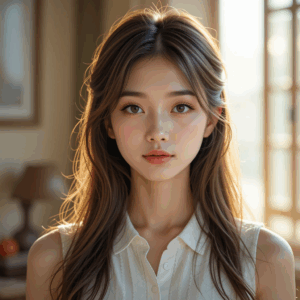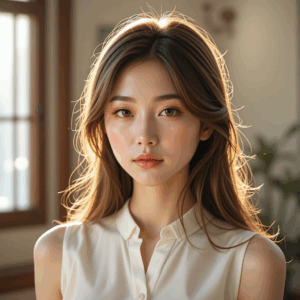Delving into The Evolution of Beauty: AI’s Interpretation of the Perfect Woman, this introduction immerses readers in a unique and compelling narrative, with a tone that is both engaging and thought-provoking from the very first sentence.
Exploring the concept of beauty throughout history and its modern interpretation through AI, this discussion promises to be enlightening and captivating.
 In art and literature, the concept of the perfect woman has been a recurring theme that reflects the ideals and values of different cultures throughout history. These representations often shape societal perceptions of beauty and femininity.
. People can easily alter their appearance in photos, creating a distorted view of beauty that is unattainable without digital manipulation.
In art and literature, the concept of the perfect woman has been a recurring theme that reflects the ideals and values of different cultures throughout history. These representations often shape societal perceptions of beauty and femininity.
. People can easily alter their appearance in photos, creating a distorted view of beauty that is unattainable without digital manipulation.
 Embracing diversity and inclusivity in beauty is crucial in redefining societal beauty standards and promoting self-acceptance among individuals of all backgrounds.
Embracing diversity and inclusivity in beauty is crucial in redefining societal beauty standards and promoting self-acceptance among individuals of all backgrounds.
 In conclusion, The Evolution of Beauty: AI’s Interpretation of the Perfect Woman sheds light on the complex relationship between technology, society, and beauty standards, leaving readers with a fresh perspective on this timeless topic.
In conclusion, The Evolution of Beauty: AI’s Interpretation of the Perfect Woman sheds light on the complex relationship between technology, society, and beauty standards, leaving readers with a fresh perspective on this timeless topic.
Introduction to the Evolution of Beauty
Beauty, a concept as old as humanity itself, has continuously evolved over time, influenced by various societal factors and cultural norms. The perception of beauty is not static but rather fluid, changing with each era and reflecting the values and ideals of that time. Societal influences play a crucial role in shaping our understanding of beauty. From ancient civilizations to modern societies, beauty standards have been molded by factors such as art, media, fashion, and even political ideologies. These influences often dictate what is considered attractive or desirable in a particular era.Historical Changes in Standards of Beauty
Throughout history, the definition of beauty has undergone significant transformations, reflecting the changing perspectives of different cultures and time periods. Here are some key historical changes in standards of beauty:- Ancient Civilizations: In ancient Egypt, beauty was associated with symmetry and balance, with features like smooth skin and elongated necks being highly prized.
- Medieval Europe: During the Middle Ages, pale skin was considered a sign of wealth and nobility, as it indicated that one did not have to work outdoors.
- Renaissance Period: The Renaissance celebrated fuller figures and voluptuous curves, symbolizing prosperity and fertility.
- Victorian Era: In the 19th century, corsets were used to achieve an hourglass figure, emphasizing a tiny waist and full bust.
- Modern Times: Today, beauty standards are more diverse and inclusive, embracing a wide range of body types, skin colors, and features.
The Perfect Woman in Art and Literature
 In art and literature, the concept of the perfect woman has been a recurring theme that reflects the ideals and values of different cultures throughout history. These representations often shape societal perceptions of beauty and femininity.
In art and literature, the concept of the perfect woman has been a recurring theme that reflects the ideals and values of different cultures throughout history. These representations often shape societal perceptions of beauty and femininity.
Portrayal in Art
Artistic depictions of the perfect woman vary across cultures and time periods. In ancient Greek art, the ideal woman was often portrayed as goddess-like with symmetrical features and a serene expression, embodying grace and beauty. On the other hand, Renaissance art in Europe celebrated fuller figures and voluptuous curves as the epitome of beauty, seen in works like Botticelli's "The Birth of Venus."In contrast, traditional Chinese art often depicted the perfect woman as delicate and refined, with an emphasis on elegance and subtlety. Japanese art, particularly during the Edo period, highlighted the beauty of simplicity and natural grace in women through intricate paintings and woodblock prints.Representation in Literature
Literature has played a significant role in shaping the ideal image of beauty through storytelling and character portrayals. In Western literature, works like Shakespeare's sonnets and Petrarch's poetry idealize women as ethereal beings with angelic qualities, often described in terms of purity and virtue.In contrast, Japanese literature, such as the Tale of Genji, presents a more nuanced view of the perfect woman, emphasizing intelligence, wit, and emotional depth as essential qualities of beauty. This reflects a cultural shift towards appreciating inner qualities alongside physical appearance.Overall, the portrayal of the perfect woman in art and literature provides insight into the evolving standards of beauty and femininity across different cultures and historical periods.Beauty Standards in the Digital Age
In today's digital age, beauty standards have undergone a significant transformation due to the pervasive influence of social media and technology.The Impact of Social Media on Beauty Standards
Social media platforms like Instagram, TikTok, and Snapchat have played a crucial role in shaping beauty ideals. Users are constantly exposed to curated images of flawless individuals, leading to unrealistic expectations and pressure to conform to these standards.The Role of Technology in Shaping Perceptions of Beauty
Advancements in technology, such as filters and editing tools, have blurred the line between reality and fantasyThe Influence of AI and Virtual Influencers on the Ideal Image of Beauty
AI-powered algorithms are now being used to create virtual influencers who embody the "perfect" image of beauty. These computer-generated models set new standards that are often unrealistic and unattainable, further perpetuating the cycle of unachievable beauty ideals.The Science Behind Beauty
Beauty is a concept deeply rooted in our biology and psychology, shaping our perceptions and preferences. The interplay of various biological factors and evolutionary psychology theories significantly influences how we perceive beauty and attractiveness. Moreover, with the advancement of technology, AI algorithms are now being utilized to interpret and define the perfect woman based on vast amounts of data.Biological Factors Shaping Beauty
- Genetic Diversity: Evolutionarily, genetic diversity is considered attractive as it enhances the chances of healthier offspring with a wider range of immune system defenses.
- Symmetry: Symmetrical features are often perceived as more attractive due to their association with good health and genetic fitness.
- Hormones: Hormonal influences, such as estrogen and testosterone, play a role in determining facial features and bodily proportions that are deemed attractive.
Evolutionary Psychology Theories on Attraction
- Mate Selection: Evolutionary psychology suggests that traits associated with beauty are linked to reproductive success, as they signal health, fertility, and genetic fitness.
- Social Influence: Cultural norms and societal standards also impact our perceptions of beauty, reflecting evolutionary principles of mate selection within specific social contexts.
- Adaptive Significance: The preference for certain beauty traits may have adaptive significance, aiding in the survival and reproduction of individuals and their offspring.
AI Algorithms Defining the Perfect Woman
- Data Analysis: AI algorithms analyze vast datasets of facial features, body proportions, and other characteristics to create a composite image of the "perfect woman" based on popular beauty standards.
- Preference Learning: By learning from user interactions and feedback, AI can continuously refine its definition of the ideal female form, adapting to evolving beauty trends and preferences.
- Ethical Considerations: However, ethical concerns arise regarding the reinforcement of narrow beauty standards and the potential impact on individual self-esteem and body image.
Diversity and Inclusivity in Beauty
 Embracing diversity and inclusivity in beauty is crucial in redefining societal beauty standards and promoting self-acceptance among individuals of all backgrounds.
Embracing diversity and inclusivity in beauty is crucial in redefining societal beauty standards and promoting self-acceptance among individuals of all backgrounds.
Importance of Diversity and Representation
The representation of diverse ethnicities, body types, ages, and abilities in the beauty industry is essential for fostering a culture of acceptance and celebrating individual uniqueness.Shift towards Inclusivity in the Beauty Industry
- Many beauty brands are now expanding their shade ranges to cater to a wider spectrum of skin tones, acknowledging the beauty of all complexions.
- Inclusive marketing campaigns featuring models of different backgrounds are becoming more prevalent, challenging traditional beauty norms.
- Beauty influencers and celebrities are using their platforms to advocate for inclusivity and representation, influencing the industry to embrace diversity.
AI’s Role in Promoting Diversity in Beauty Standards
Artificial intelligence can play a significant role in promoting diversity in beauty standards by analyzing data to identify gaps in representation and providing insights to brands on how to be more inclusive.End of Discussion
 In conclusion, The Evolution of Beauty: AI’s Interpretation of the Perfect Woman sheds light on the complex relationship between technology, society, and beauty standards, leaving readers with a fresh perspective on this timeless topic.
In conclusion, The Evolution of Beauty: AI’s Interpretation of the Perfect Woman sheds light on the complex relationship between technology, society, and beauty standards, leaving readers with a fresh perspective on this timeless topic.










